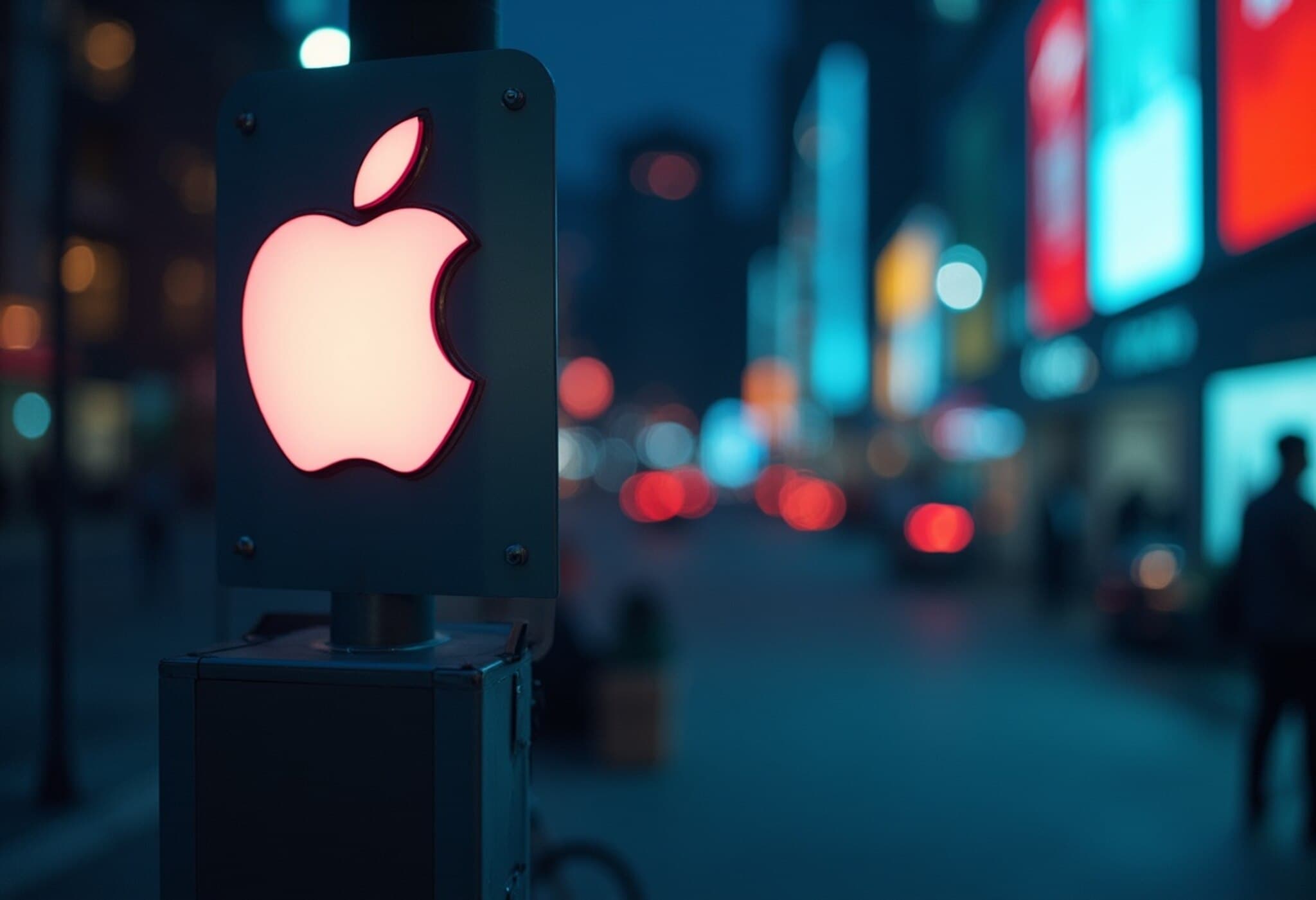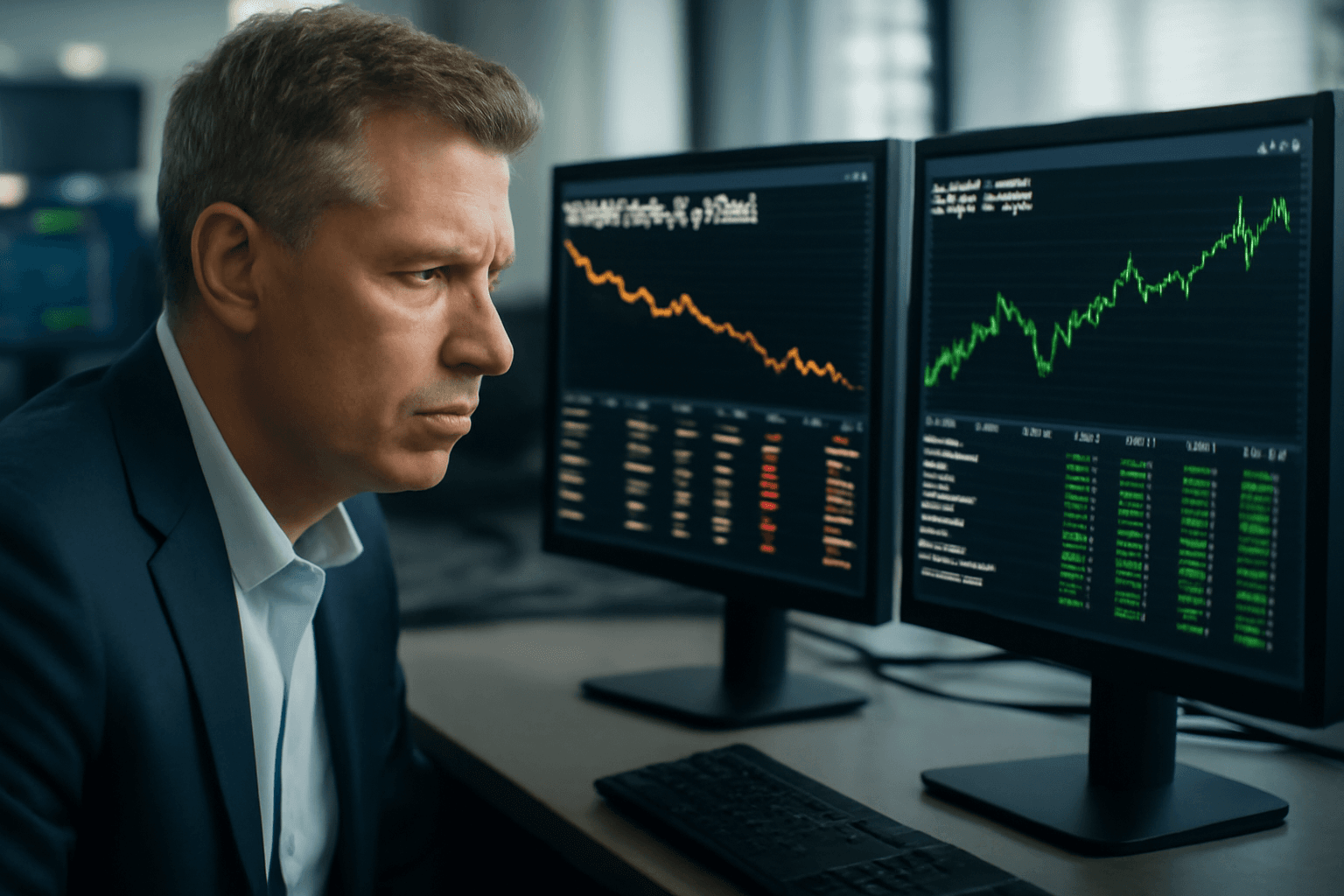Apple’s Shifting Role in Tech's Market Safety Net
In recent years, technology stocks have often served as a refuge for investors during turbulent times. Apple, in particular, was widely regarded as a reliable safe haven, especially during the uncertainty of the Covid pandemic. However, this year has ushered in a noticeable change: Apple’s stock has notably lagged behind its sector peers and broader market benchmarks, prompting fresh questions about tech’s evolving role amid volatility.
Apple’s Underperformance in Context
Over the past two months, Apple’s stock price has dipped by approximately 0.6%, while looking at a slightly longer window of three months ending June 20, the decline deepens to around 6%. This marks Apple’s weakest relative showing against its own tech sector fund since December 2002. Interestingly, among the so-called “Magnificent 7” tech giants, Apple stands alone in recently trading below both its 50-day and 200-day moving averages, signaling near-term technical softness.
Tech Sector’s Resilience Despite Apple’s Lag
Despite Apple’s recent slump, technology as a whole remains a strong market performer. The SPDR Information Technology Sector Fund has surged more than 12% in the past three months, while the Invesco Nasdaq Trust recorded about a 10% gain. These figures nearly double the return of the S&P 500 Index over the same period, highlighting robust appetite for tech stocks broadly.
Investor Strategies Amid Market Fluctuations
For many investors, embracing broad market approaches still means gaining significant exposure to technology. The top tech companies constitute over 30% of the S&P 500, making index funds and ETFs prime vehicles for capturing tech’s growth without concentrated risk.
- The Vanguard S&P 500 ETF has topped all other equity funds in net new inflows, nearing an annual record with about $82 billion poured in during 2025.
- Following close behind are tech-centric ETFs like the Invesco Nasdaq 100 and the Invesco QQQ Trust, with nearly $9 billion and $8 billion in inflows respectively.
- The Vanguard Information Technology ETF also attracted roughly $3 billion in new investments.
Balancing Tech with Defensive Sectors
Still, investors aren’t just placing all their chips on technology. Traditional defensive sectors such as utilities and consumer staples have shown resilience, slightly outperforming the S&P 500 this year and nearly matching tech’s returns amid ongoing market volatility.
The current price-to-earnings ratio (P/E) for the tech sector stands at 28.5, above the S&P 500 average of 22.4 but comparable to consumer discretionary sectors. It remains lower than real estate, which sports the highest P/E in the index.
Expert Perspectives on Tech’s Future Amid Uncertainty
Experts note that while technology once stood alone as a clear safe haven during the 2020 pandemic surge, that market environment was unique due to widespread remote work and learning catalysts. Since then, tech has experienced ups and downs but continues as a dependable growth engine, buoyed by advances in artificial intelligence and semiconductor leadership, particularly from companies like Nvidia.
One key observation is that investors are increasingly combining tech exposure with traditional hedges such as short-term fixed income ETFs, balancing growth potential with risk management.
Moreover, market volatility is now seen less as a deterrent and more as an opportunity. History shows that shying away from technology stocks based solely on valuation overlooks transformational trends. The ongoing AI revolution is expected to fuel significant growth, making dips potential entry points for savvy investors.
Adapting to a More Volatile Market Climate
Investors are gradually acclimating to increased fluctuations, accepting that volatility may persist longer than anticipated. This evolving mindset underscores a broader shift from relying on single-sector safe havens toward diversified portfolios blending growth-oriented technology stocks with defensive assets.



















